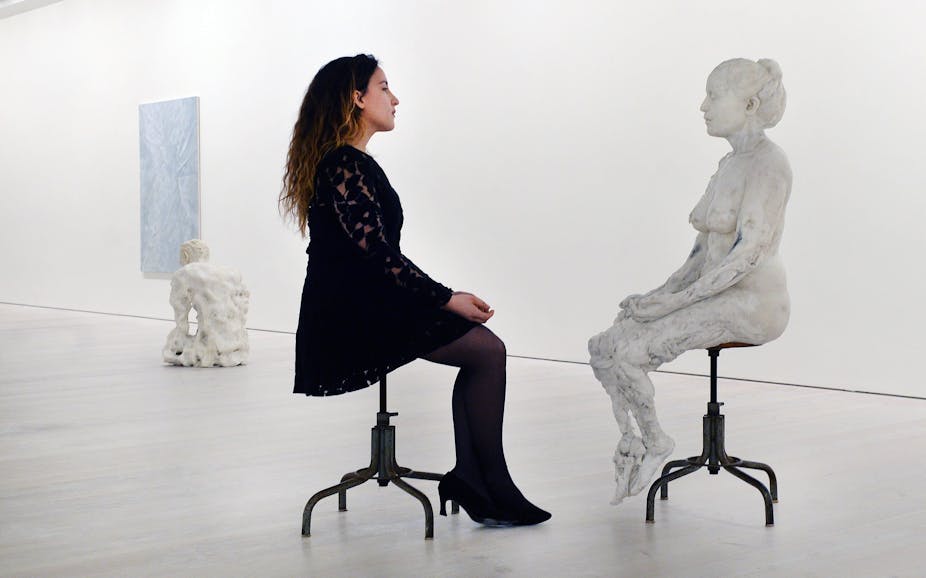A spectre of evaluation is haunting the arts. The relationships between artists and their audiences are being mediated by an ever-more complex system that determines the value of art. It’s a system driven by a conglomeration of experts: gallery directors, critics, historians and academics.
That’s the proposition made by Swiss artist Thomas Hirschhorn in his artwork, The Spectre of Evaluation. Hirshhorn makes complex installations from everyday materials such as cardboard, foil and masking tape. In his art-making he is searching for a direct, unmediated route to everyday people, what he calls “the non-exclusive audience”.
Art for everyone
Over the last decade, this “non-exclusive audience” has been playing a more prominent role in the arts – not just as audiences but also as the creators and the content of stages, screens and galleries.

This move towards forms of participatory arts is being driven by a variety of different interests.
Artists, activists, governments and cultural institutions all have different reasons to look to Hirschhorn’s “non-exclusive audience”. These include aesthetic innovation, political salvation, revenue raising, audience diversification or a range of social goals.
Today, there is a broad “instrumentalisation of the arts” – signalled by a range of social uses for art. Witness the new interest in art from non-art agencies and government departments across all public policy areas – from health and urban renewal, to crime prevention and anti-discrimination. RMIT researchers Martin Mulligan and Pia Smith have termed this trend the “turn to community”, the renewed interest in forms of local, collective identities.
Community-based arts – for which communities?
So, is the idea of community-based arts being co-opted or reinvented?
And what does community-based arts mean when it is as likely to be found at the Venice Biennale as at a local community centre? Certainly the terms in which community-based art were previously been understood – in opposition to an elitist and exclusive system of art forms or a standardised system of mass culture – have now shifted dramatically.

Central to ongoing debates about the nature and definitions of community-based arts is the problem of evaluation – which involves dealing with broad questions about its value and technical questions about the mechanisms through which it might be measured.
Some aspects of these debates are not new: indeed, community-based arts have often brought questions of evaluation to the fore.
In her account of the Australia Council’s Community Art Programs in the 1970s and 1980s, Australian sociologist Gay Hawkins argues that:
the establishment of social or non-aesthetic measures of value was [its] greatest achievement. These discourses remain as a significant alternative to the idea of art as a minority of “excellent” forms at the top of a universal cultural hierarchy.
But current debates about evaluation have a renewed urgency and complexity. It’s possible to identify six broad reasons why evaluation is currently a problem:
- there’s a lack of clarity about what evaluation means: it’s currently used to refer to a range of very different procedures with different aims
- many community-based arts activities aim to contest the idea of singular, narrowly-defined or pre-defined ideas of value: these aims are not usually reflected in evaluation frameworks or processes
- evaluation also poses technical problems: what methods will register the kinds of data required?
- cultural activities are often complex and unfold in non-linear, unpredictable ways, posing challenges for evaluation, particularly where resources are limited
- partnerships between arts and non-arts agencies can mean differing frameworks for evaluation, with divergent assumptions about success and measurement
- evaluations often consider “the arts” in the abstract, without reference to the specific processes through which art making and collaborative activities actually unfold.
Measuring cultural value
The spectres of evaluation should also be understood in relation to global discussions about cultural value and measurement.
Recent discussions of cultural value in the UK in the shadow of a global financial crisis have asked how cultural value could be measured at a time when financial systems were being re-evaluated, and issues of governance and accountability were also to the fore.
These debates highlight the ways in which evaluation is ultimately about value: that behind the series of abstract technical operations and measures lie a series of value-laden, political decisions. In a system where economic values and measurements are dominant, articulating alternative values can be a challenge.
Secondly, evaluation should be considered in relation to debates about cultural measurement.
For example, can we use methods from other disciplines – such as the limits to predicting causality or the ethics of requiring control groups – to measure the distinctive qualities of arts and culture?
The challenge for the arts is how to negotiate the new pressures to evaluate itself while also inventing new ways that artists, artworks, a non-exclusive audience, experts and the processes of evaluation and judgement might connect with each other.
The Spectres of Evaluation: Rethinking: Art/Community/Value conference takes place on February 6-7 at Footscray Community Arts Centre, Melbourne.

